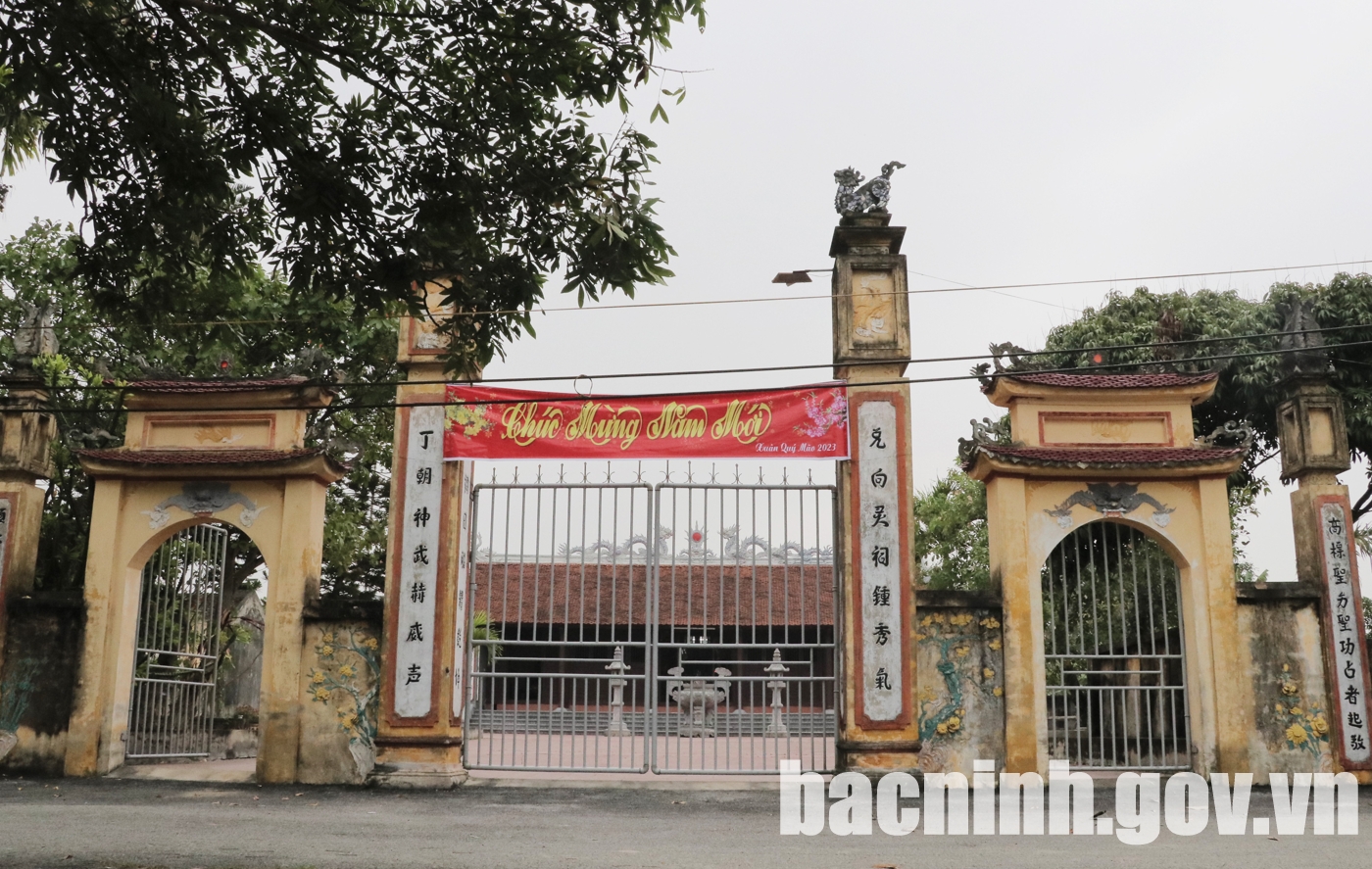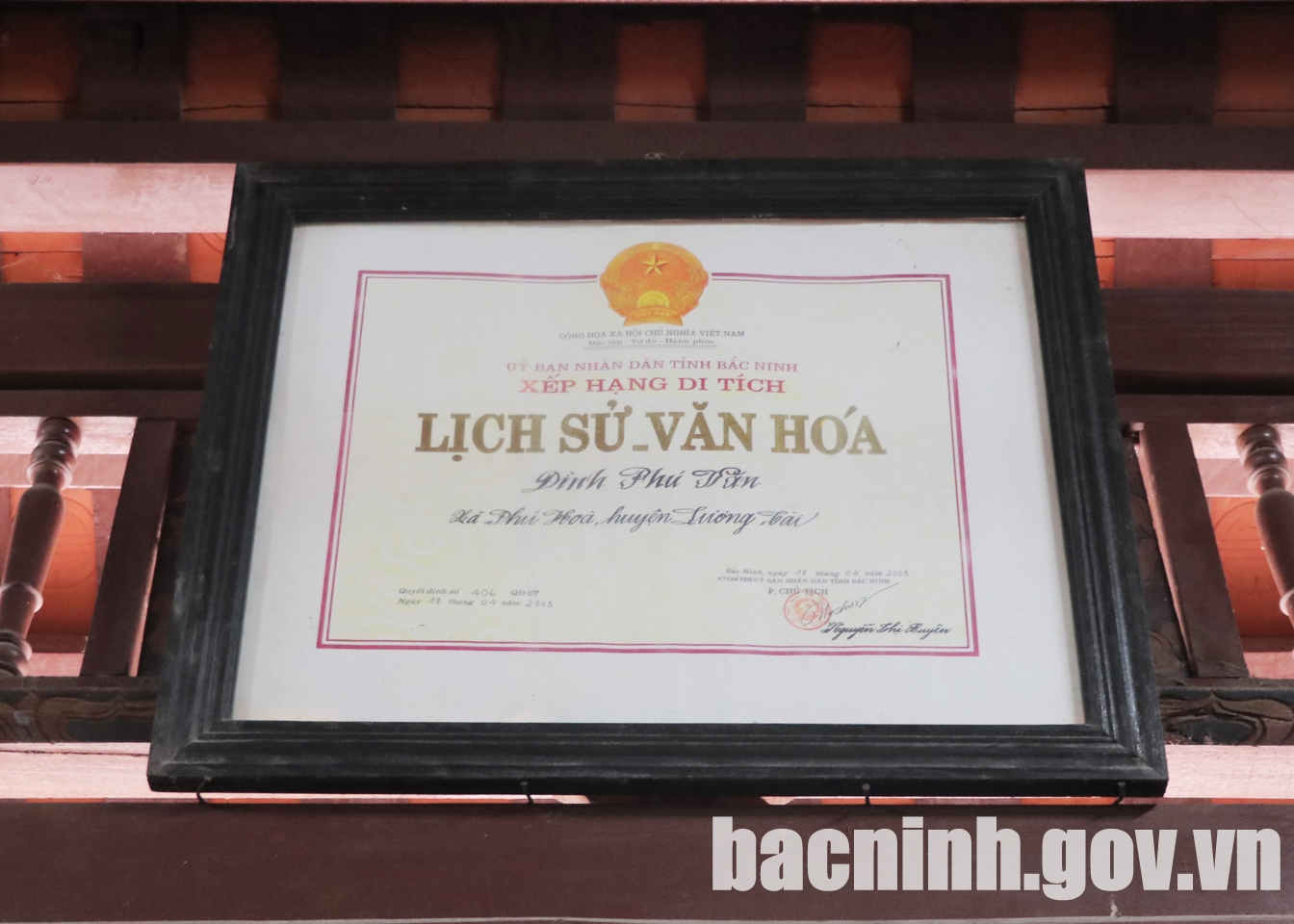Phu Tren communal house
(BNP) - The Phu Tren communal home in Phu Hoa commune, Luong Tai district, was constructed many years ago. During the resistance battle in 1949, the communal house was demolished. Local people helped to rebuild the communal house on the former site in accordance with the original architectural design after the peace was established.

Dai Dinh building (Great Communal Hall) of Phu Tren communal house.
The communal house worships three tutelary gods, Linh Cong, Lang Cong, and Ngo, who have made significant contributions to Dinh Bo Linh in putting down the revolt of 12 warlords and preserving the country's freedom.

The communal house worships three tutelary gods.
The communal house has an architecture of Chinese “Dinh” letter, facing the Northwest including: 7-compartment Great Communal Hall, 2-compartment Emperor’s Harem. The great communal hall has a scale of 5 compartments and 2 lean-tons, architectural style with 4 curved roofs.


The ordinations dates back to the Nguyen Dynasty.
The Emperor’s Harem has 2 compartments.


The communal house has stone beer.
Typical documents and artifacts include: 07 Stone Steles, 07 ordinations of the Nguyen Dynasty; 03 altars, 01 tray, 01 incense bowl, dating back to the 20th century.

The gate of Phu Tren communal house.
Phu Tren communal house is a focal point of community connection and togetherness. The relic has always been a cultural and religious center with profound spiritual significance in people's lives, a place for people to educate and teach their children and grandchildren about the tradition of drinking water, remembering the source, and being grateful to those who have public with the people and the country since ancient times.

The communal house is classified as a provincial historical relic by the State in Decision No. 406/QD-CT dated April 18, 2003.






